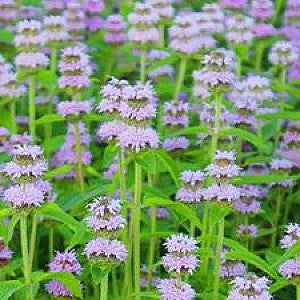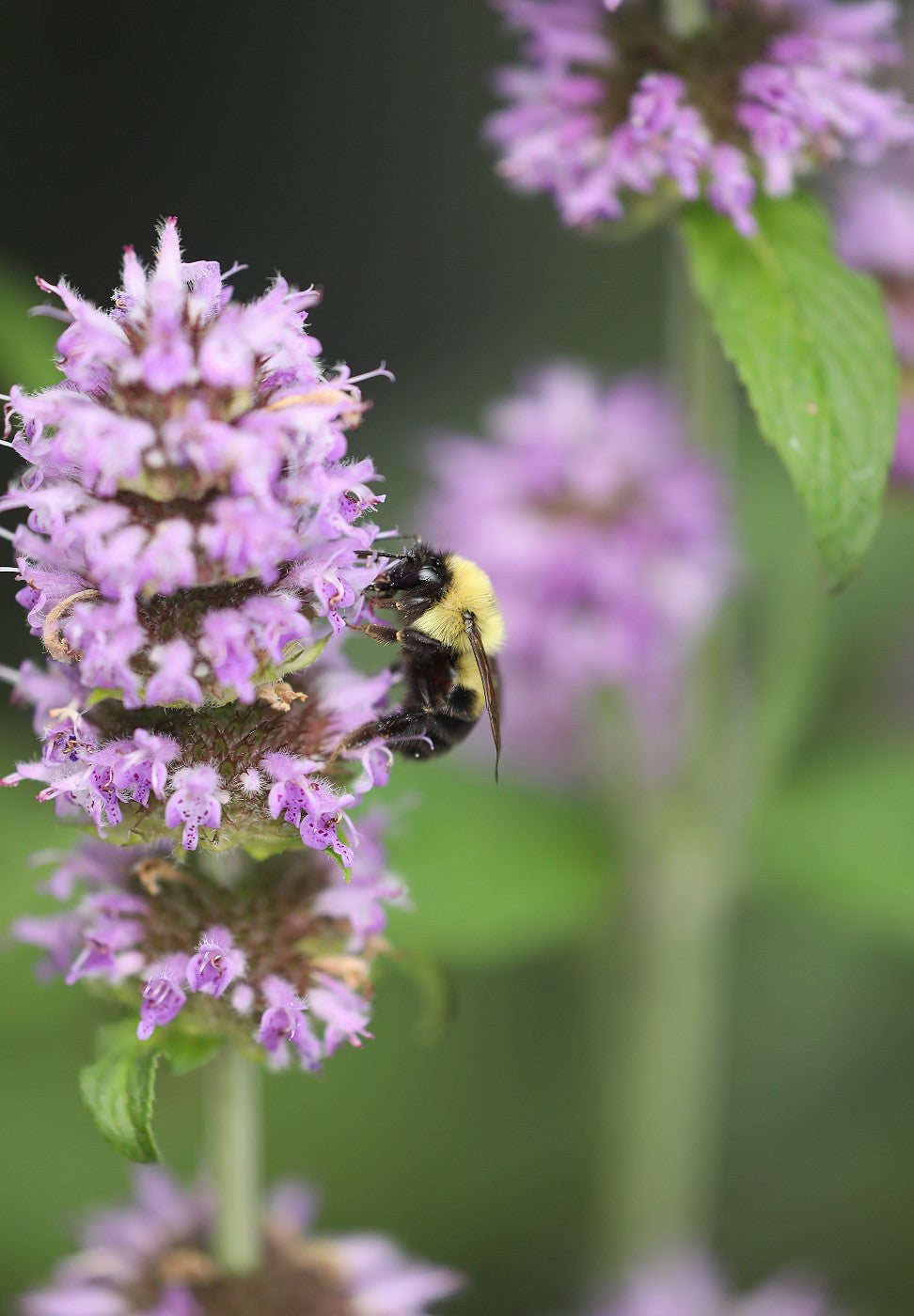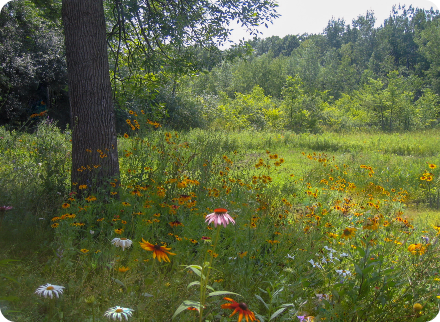Downy Wood Mint Seeds (Blephilia ciliata)
Downy Wood Mint Seeds (Blephilia ciliata)
 Yes!
This Item is Available
Yes!
This Item is Available
 Sorry!
This Item is not Available
Sorry!
This Item is not Available
Couldn't load pickup availability


Don't Forget: Free Shipping on All Orders of $39 or More!
DOWNY WOOD MINT - Blephilia ciliata (Seeds per Packet: 1,000+) Downy Wood Mint is a native sturdy and upright perennial with oblong gray-green leaves. Early to Mid-summer dense clusters of lavender, purple flowers surround the stems. The flowers are a big draw for native bees and other pollinators. This mint family member resembles monarda and is less aggressive and slightly less aromatic. Deer, Rabbit and others find it unpalatable. Sun to Partial Shade, average to dry soils. Can be planted in both open meadows and woodlands. This plant is an excellent choice for pollinator gardens, prairies, meadows, open woodlands and mass plantings. Blooms from Early - Mid-Summer.
Zones: 4,5,6,7,8
Light Requirement: Full Shade to Full Sun
Height: 1-2 ft.
Plant Type: Native Perennial
Germination Code: 1 - Native wildflowers take time to establish. These are not first year blooming species. This species may grow and leaf the first year or lie dormant and needs one period of cold stratification.
Shipping: Usually ships in 2 business days. For a guaranteed delivery date, please contact customer service.
About: Many seeds of woodland and rare wildflowers have built-in dormancy mechanisms which protect them from germinating before killing frosts or in times of drought. In the wild, seeds will lie dormant until they acclimate to their new environment or until the proper conditions for growth occur. To be successful with these types of species and growing them from seeds you must realize that each species has a different method of naturally breaking dormancy. Woodland and Rare wildflowers are not instant garden flowers, and many take a great amount of patience before they germinate and bloom. Once they do, they are well worth the wait.
Different Ways Woodland and Rare Species Break Dormancy: Each species is different. Some are relatively quick and act like traditional perennials while others can take a few years. Below, we have outlined different ways these species break dormancy to help you better understand why some take longer than others. It will also help you to better understand why they don't germinate the first or second year - so don't give up on them!
G1. - Some species germinate upon sowing in a warm location like any other perennial. They grow and leaf the first year to begin blooming the second and successive years.
G2. – These species need a cold, moist stratification i.e.. Fall/Winter.
G3. - Very small seeds need light to break dormancy so they should be planted no deeper than 1/8th of an inch and just a light layer of soil cover. They shouldn't be allowed to dry out. You can tell the size of your seeds by just looking at them. These species need one period of cold stratification
G4. - These species will need a warm, moist period followed by a cold, moist period and will need 2-4 full years of these alternating conditions to break dormancy.
Planting Information: Seeds needing scarification, nicking or any specialized treatments with the exception of stratification have been done before shipping to you. Select a planting location with partial shade or shade or filtered light. Prepare the planting bed so that the soil is well draining and rich in humus. The best way to do this is to till the top few inches of soil with a garden rake and then mix in several inches of humus, such as compost or peat moss if the soil is not already rich and well-draining. Plant the seed 1-2 to 1 inch below the surface of the soil unless you have small seeds which should be planted no deeper than 1/8 inch. Cover with a light layer of soil. Most seeds need to be protected from drying winds and sunlight so cover them quickly. Water well if planting in spring, water lightly if planting in fall.
Fern Spores: Direct sow fern spores on soil surface and pat them down for a good spore to soil contact.
About Stratification of Native and Woodland Species:
Most woodland and native wildflowers need cold stratification before germinating. Some species will need more than one period of cold stratification. We do suggest planting these types of species where you wish them to grow and let nature take its course vs. trying to replicate the stratification process. If you wish to try and replicate this process, put the seeds in a sterile media such as a paper towel, sand or vermiculite that is slightly moist but not wet (be careful that there is not too much moisture/water) and place the seeds in a plastic Ziplock bag and close tightly. Place the bag in the fridge for 60 days and then do 1 of 2 things: 1) Sow your seedlings where you wish them to grow. This only occurs if you need just one period of cold stratification. 2) If a species needs more than one period: after the 60-day period of cold, place the bag in a dark warm place for 30-45 days and then repeat the cold/warm period/s as needed until you see sprouts. If they germinate in the bag, they should be sown immediately. Woodland and native wildflowers should not be planted in pots or seed trays before stratifying them. Woodland and native wildflowers take time to establish. These are not first year blooming species. Periods of Stratification: G1 – acts like a traditional perennial – see Germ Code 1 above. G2 – one period of cold stratification G3 – one period of cold stratification G4 - multiple periods of cold stratificationAny Question - Contact Us

We offer CUSTOM Seed Mixes for All Your Projects!
We've got you COVERED for Landscape
Management, Conservation & More!






